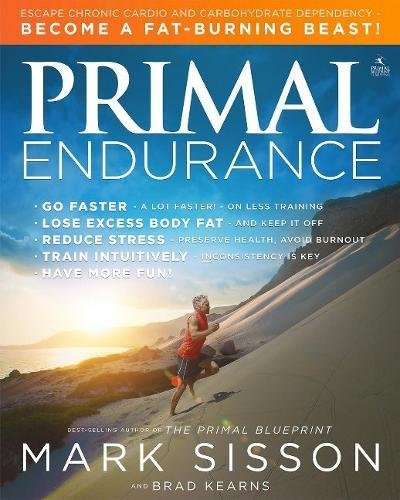Avoiding “Chronic Cardio”
The term “Chronic Cardio” came into my awareness while reading a book by Mark Sisson titled Primal Endurance. This term is used to describe the exercise patterns that some of us get into while pursuing our goals, whether they be weight loss, better fitness, or an upcoming race. The description of this pattern in Mark’s book hits close to home for me. As someone who regards himself as having a fair to good understanding of exercise physiology, it felt as if the major revelations of this book should have been obvious to me long ago.
As a new triathlete, I dove head first into the deep end by signing up for a full Ironman race in January 2017. I had a lack of formal training experience in all three sports (swimming, cycling, running), and needless to say, I had a lot to learn. Combine this with my tendency to push myself hard in sports and recreational exercise and you have the perfect conditions to create a chronic cardio pattern. Much of my hard work in my training routine, which is typically something to celebrate, was likely affecting me poorly.
High intensity exercise, or even moderate intensity exercise for long enough periods, are stressful to the body. But, stress to the body is the point, right? We want to induce stress on the tissues and systems of the body in order to stimulate growth and better fitness. This form of stress is termed eustress due to it yielding growth and progress rather than negative effects so commonly associated with the term stress. What must be considered, however, is that this stress must be accompanied by appropriate progressions, variation, and sufficient periods of rest for it to classify as eustress. Otherwise, this stress can have deleterious effects on the systems we work so hard to train.
I started out my training process with good intentions. I educated myself and learned about performing field tests to establish my heart rate zones. I established these zones and tried to work within them to allow for the establishment of a solid aerobic base off of which I could build anaerobic and sport specific fitness as race day approached. With about eight weeks left in my training for my first Ironman, I had bike crash that resulted in a shoulder injury. I was thrown off of my training regimen in a big way and when my shoulder recovered sufficiently to resume my training, I felt behind. I felt as though I was rapidly losing fitness (I wasn’t) and feared everything I’d worked for was going to suffer (it wasn’t). Because of this I started pushing hard to catch up. My plan to allow variation in my training days and appropriate rest went out the window and my inexperience started to show. I fell into the belief that if I just worked harder, I could catch up. My training intensity accelerated and became more uniform. Rest breaks and rest days became less sacred. I was soon recognizing that I was overreaching (a term used to describe an athlete suffering negative effects from their training, short of overtraining syndrome). I started noticing mood changes and a plateauing of my progress. This is NOT how you peak at the right time for a race!
What can be worse is the potential harmful long-term effects of this. Primal Endurance describes how exercise results in oxidative stress and inflammation within our bodies. When we exert ourselves at moderate-high intensities for long periods of time we rob our body of its ability to properly manage this stress in a healthy way that is regenerative in nature, and the negative start to stack up. Over enough time, it can be assumed that this stress may affect our cardiovascular system—especially if paired with other lifestyle factors that are pro-inflammatory in nature.
The key to avoiding this common exercise/training pitfall is in recognizing the importance of having a specific intent to your training. While “keeping the body guessing” is a little simplistic, it is essentially true. Primal Endurance suggests strategically constructing a training plan that allows for adequate low-intensity, aerobic exercise to build a strong aerobic base—equipping your body to maximize energy efficiency in a way that includes oxygen (aerobic), and thereby reduces the physiological stress to your body and creates a platform on which to build fitness with higher intensity bouts of exercise. The book makes clear that high intensity exercise is not, in and of itself, damaging to the body—but that the chronic application of this exercise stress is what damages the lining of our vessels, heart musculature, and tissues throughout our body. High intensity exercise, such as sprints and heavy resistance training, can be implemented and be quite beneficial for endurance athletes!
If you are looking for a good read on dietary and training approaches to endurance sport, I highly recommend reading Mark Sisson’s book, Primal Endurance.

If you have any questions regarding maintaining a healthy body and mind while training for your next race, or if you are battling injury, give Omaha Physical Therapy Institute a call! WE CAN HELP!
Make an Appointment Today! »
Your Comeback Story Starts Here!
